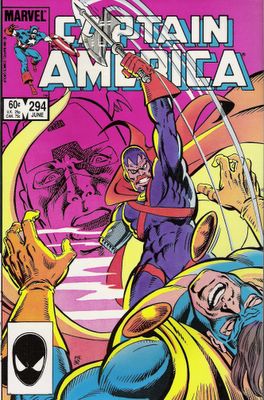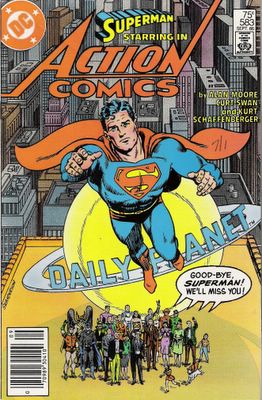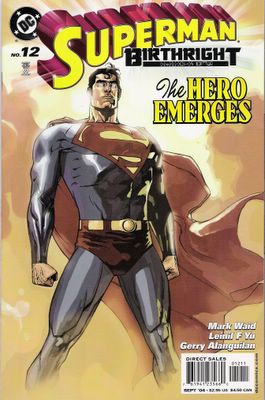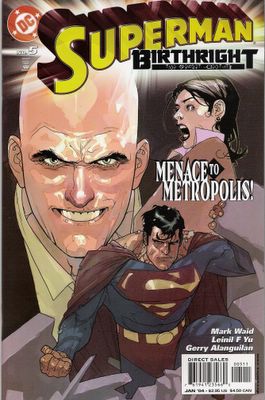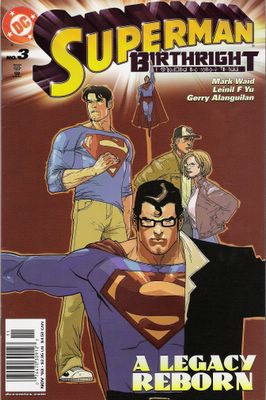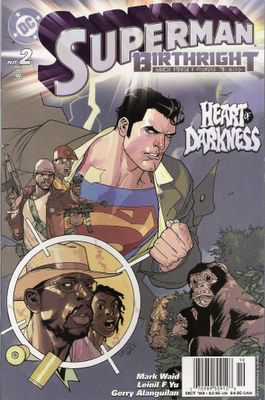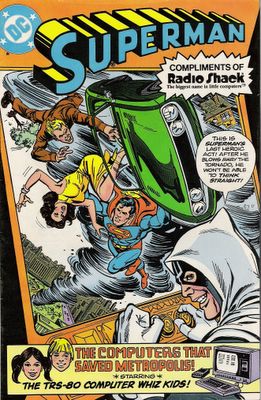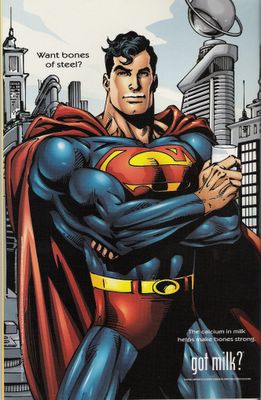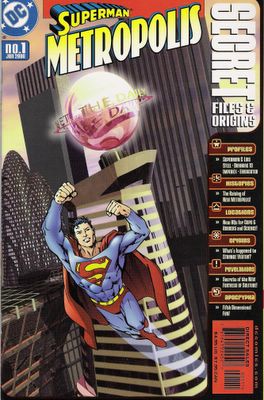Matt Butcher
English 640
April 25, 2005
The Villanelle
Some forms of poetry are thought to be fixed. These forms were created and set by some master of the craft long ago. The villanelle is thought to be one of those fixed forms. However, the villanelle, while having its first appearance four hundred years ago, is now thought to be a twentieth century creation. The twentieth century shaped this form and modern masters have learned ways to turn these fixed rules into serious poetry.
The villanelle's origin is shrouded in French and Italian dance. Its origins in Italian are from a simple rustic life:
villa means farm and
villano means farmhand. Historically, the Italian villanella was a rustic dance, or the music for such a dance” (Unst). If it was a repetitive song to pass agricultural time, a round song with refrains to pass the time (Strand and Boland 6), it was a type of song probably fixed much like the oral tradition of fairy tales and nursery rhymes. The gist is always there but the account changes over time, much like the form of the villanelle has changed with the passage of time.
It wasn't until the late sixteenth century that the form began to be written by “courtly composers [who] imitated peasant songs of the oral tradition” (Kane). Even these had no fixed form, as evidenced by the work of Donna G. Cardonne, who surveyed “musical
villanesche lyrics published between 1537 and 1559...[where] none of the dozens of rhyme schemes she catalogs bears even a slight resemblance to the present-day form of the villanelle” (Kane).
The form that has come to represent the villanelle has been attributed to a French poet, Jean Passerat. Published in 1606, his “J'ay perdu my Tourterelle” is thought to be the first villanelle (French, “The First Villanelle”) to have established the following rhyme scheme and repetition of lines (Kane):
A¹bA² abA¹ abA² abA¹A².
J'ay perdu ma Tourterelle:
Est-ce point celle que j'oy?
Je veus aller aprés elle.
Tu regretes ta femelle,
Helas! aussi fai-je moy,
J'ay perdu ma Tourterelle.
Si ton Amour est fidelle,
Aussi est ferme ma foy,
Je veus aller aprés elle.
Ta plainte se renouvelle;
Tousjours plaindre je me doy:
J'ay perdu ma Tourterelle.
En ne voyant plus la belle
Plus rien de beau je ne voy:
Je veus aller aprés elle.
Mort, que tant de fois j'appelle,
Pren ce qui se donne à toy:
J'ay perdu ma Tourterelle,
Je veus aller aprés elle.
(French, “The First Villanelle.” An English translation by Amanda French appears in the appendix.)
This poem received immediate popularity, “amounting to popular-song status in its day” (Strand and Boland 7). This poem was so well-liked that it was often loosely imitated. No other cultivators of the form during Passerat's time period made an impact and the villanelle fell into history. It wasn't until 1872 when a treatise by Théodore de Banville influenced poets of the time (Kane). In it, “the primary motivation in the dissemination of the villanelle in the nineteenth century is post-Romantic campaigning” (French, “Refrain” 84). Luckily, the villanelle was one of many forms that enjoyed attention during the Victorian period (Bristow). It wasn't until the late nineteenth century, with a resurgence of interest in old French forms, that the famous Oscar Wilde in 1891 contributed a villanelle that “shows the form ready to be launched into the twentieth century (Strand and Boland 7).
Theocritus - A Villanelle
by Oscar Wilde
O singer of Persephone!
In the dim meadows desolate
Dost thou remember Sicily?
Still through the ivy flits the bee
Where Amaryllis lies in state;
O Singer of Persephone!
Simaetha calls on Hecate
And hears the wild dogs at the gate;
Dost thou remember Sicily?
Still by the light and laughing sea
Poor Polypheme bemoans his fate;
O Singer of Persephone!
And still in boyish rivalry
Young Daphnis challenges his mate;
Dost thou remember Sicily?
Slim Lacon keeps a goat for thee,
For thee the jocund shepherds wait;
O Singer of Persephone!
Dost thou remember Sicily?
This poem shows the beginning of the repetitive structure that would be used in the twentieth century. Although stilted and simple, Wilde's influence and reputation definitely helped this form along.
Probably the most famous villanelle is Dylan Thomas' 1952 “Do Not Go Gentle into That Good Night.” In this poem, Dylan's recurring lines act as a refrain that he wants his father to aspire to while lying on his death bed.
Do Not Go Gentle into That Good Night
by Dylan Thomas
Do not go gentle into that good night,
Old age should burn and rave at close of day;
Rage, rage against the dying of the light.
Though wise men at their end know dark is right,
Because their words had forked no lightning they
Do not go gentle into that good night.
Good men, the last wave by, crying how bright
Their frail deeds might have danced in a green bay,
Rage, rage against the dying of the light.
Wild men who caught and sang the sun in flight,
And learn, too late, they grieved it on its way,
Do not go gentle into that good night.
Grave men, near death, who see with blinding sight
Blind eyes could blaze like meteors and be gay,
Rage, rage against the dying of the light.
And you, my father, there on the sad height,
Curse, bless, me now with your fierce tears, I pray.
Do not go gentle into that good night.
Rage, rage against the dying of the light.
With a series of repetitions and only two rhymes, the form of the villanelle “enables Thomas to build his poem in gradual stages while keeping the focus on his most important message” (BBC.Co.UK). Thomas also uses enjambment to make the repetition less noticeable and this helps it flow better from one stanza to the next.
It is the repetition that creates the resonance with the reader. This repetition allows easier understanding and remembrance of the main points. The two repeating lines are at the heart of the villanelle.
Edwin Arlington Robinson sees the form as his chance to interweave his main idea throughout the poem.
The House on the Hill
by Edwin Arlington Robinson
They are all gone away,
The House is shut and still,
There is nothing more to say.
Through broken walls and gray
The winds blow bleak and shrill:
They are all gone away.
Nor is there one to-day
To speak them good or ill:
There is nothing more to say.
Why is it then we stray
Around that sunken sill?
They are all gone away,
And our poor fancy-play
For them is wasted skill:
There is nothing more to say.
There is ruin and decay
In the House on the Hill:
They are all gone away,
There is nothing more to say.
This poem uses the repeating lines to connect one stanza to the next, to further expound upon his emotion in the poem. Strand and Boland see this as the form's strength, “the absence of narrative possibility” (8). However, it is when the poet builds on the refrain from stanza to stanza that the mastery of the poet creates a strong foundation of emotion and atmosphere with which to leave the reader. “The repetitions build the villanelle //By moving out beyond the tercet's cell” (Hollander 40). Building upon these repetitions from stanza to stanza creates the power behind the poetic form of the villanelle. Each stanza can deepen the feelings in the poem.
This repetition has been used in a haunting fashion. “Do you have a feeling or idea that haunts you? Then the Villanelle may be the form you need” (Unst). Sylvia Plath, known for dark and depressing literature, a kind of haunting, has used the villanelle to show a recurring and unforgettable torment.
Mad Girl's Love Song
by Sylvia Plath
"I shut my eyes and all the world drops dead;
I lift my lids and all is born again.
(I think I made you up inside my head.)
The stars go waltzing out in blue and red,
And arbitrary blackness gallops in:
I shut my eyes and all the world drops dead.
I dreamed that you bewitched me into bed
And sung me moon-struck, kissed me quite insane.
(I think I made you up inside my head.)
God topples from the sky, hell's fires fade:
Exit seraphim and Satan's men:
I shut my eyes and all the world drops dead.
I fancied you'd return the way you said,
But I grow old and I forget your name.
(I think I made you up inside my head.)
I should have loved a thunderbird instead;
At least when spring comes they roar back again.
I shut my eyes and all the world drops dead.
(I think I made you up inside my head.)"
Plath's repetition of “(I think I made you up inside my head” has an almost chant-like quality. The reader begins to think that the speaker is truly mad by repeating these lines.
More modern poets like the villanelle and realized they could use the form as an “acoustic chamber for single words” (Strand and Boland 20). Elizabeth Bishop in “One Art” keeps the rhyme scheme but the repeating lines are not necessarily duplicated word for word. These lines repeat the same idea if not the same words. “Usually they vary the content of the repeated lines, to soften the strict repetition of the traditional form” (Unst).
One Art
by Elizabeth Bishop
The art of losing isn't hard to master;
so many things seem filled with the intent
to be lost that their loss is no disaster.
Lose something every day. Accept the fluster
of lost door keys, the hour badly spent.
The art of losing isn't hard to master.
Then practice losing farther, losing faster:
places, and names, and where it was you meant
to travel. None of these will bring disaster.
I lost my mother's watch. And look! my last, or
next-to-last, of three loved houses went.
The art of losing isn't hard to master.
I lost two cities, lovely ones. And, vaster,
some realms I owned, two rivers, a continent.
I miss them, but it wasn't a disaster.
--Even losing you (the joking voice, a gesture
I love) I shan't have lied. It's evident
the art of losing's not too hard to master
though it may look like (
Write it!) like disaster.
The villanelle is a poetic form that reprocesses many of the same words, challenging the common notion that all poems have to rhyme on a deeper level. Reusing the same words can tend to get stale, especially in an art form that prides itself on finding the right word for every situation, so the reutilization of these words must have a deeper meaning.
“One Art” tells the story of loss. A short biography of the poet expresses a life that is filled with the loss of loved ones and moving from place to place because of it. This recurring theme is showcasing how she becomes inured to the loss of these loved ones, something she has to experience again and again. The villanelle seems an ultimate expression of this reliving the same nightmare over and over.
The villanelle repeats a certain pattern of words and lines. In this regard, the choice of those words to a poet must be extraordinary. The majority of Bishop’s choices are words like “loss,” “disaster,” and “losing.” It must be important to choose the word form of “loss” and use it repeatedly, even in a present tense form of “losing,” indicating that she doesn’t think these events are over, that this cycle will repeat as it has done so often in her tumultuous past. The villanelle is perfect in that regard.
In another regard, Strand and Boland express that the villanelle “…form refuses to tell a story. It circles around and around, refusing to go forward in any kind of linear development, and so suggesting at the deepest level, powerful recurrences of mood and emotion and memory” (8). Bishop keeps circling because on that inner level she is trying to talk herself into these events not being the “disaster” that they are to her life. On a conscious level, Bishop is aware that she must get over these events in order to move on with her life. On the subconscious level, she doesn’t believe it, and has to reiterate the same message to herself over and over, as the events that spawn these messages happen over and over. It is cyclical in the respect that the harsh events of her life recurring over and over will not let her move on into a linear development because she is afraid of it happening again, much like the form of the poem refuses to let her move on. Bishop’s “One Art” is an argument within the author. Like many people, the author is losing this argument with herself.
The poetry of Bruce Bennett perceives the connection with the subject matter in his poetry. The recurring lines almost act as an extended metaphor. Up until recently, the form refused to tell a story. Bennett uses the form to connect an image to a greater concern, thus moving the poem and ideas behind it forward. In a way, we escape the poem.
Spilled
by Bruce Bennett
It's not the liquid spreading on the floor,
A half a minute's labor with the mop;
It's everything you've ever spilled, and more.
The stupid broken spout that wouldn't pour;
The nasty little salesman in the shop.
It's not the liquid spreading on the floor,
A stain perhaps, a new, unwelcome chore,
But scarcely cause for sobs that will not stop.
It's everything you've ever spilled, and more.
It's the disease for which there is no cure,
The starving child, the taunting brutal cop.
It's not the liquid spreading on the floor
But through a planet, rotten to the core,
Where things grow old, get soiled, snap off, or drop.
It's everything you've ever spilled, and more:
The vision of yourself you can't ignore,
Poor wretched extra clinging to a prop!
It's not the liquid spreading on the floor.
It's everything you've ever spilled, and more.
This poem moves from the mop to the “nasty little salesman,” comparing the spill to the life of a salesman. “The poem then moves in the final stanza back from the universal to the particular, back to the image of the self, a devastating return in such a dark poem” (Darling). It is this return to its own images that creates deeper and lasting images to the reader.
Nancy O'Dea Reddy, herself a writer of the villanelle (see Appendix), references the framework that makes up the repetitions in the form. They act as a skeleton to the poem. In her poem “Metonymy,” itself not a villanelle, the poet knows about the soul of the poem being the inherent repetitions. It is the repetitions that help create meaning in the poem that words leave behind. In this excerpt from “Metonymy,” she references this:
She had no other language,
only the symmetry of fist and throat,
only the bones, their repetitions like
a villanelle, the whisper: wounded,
wounded.
Amazingly, this poetic form called the villanelle has never been truly fixed. “That the Emperor has no clothes and the fixed-form villanelle has no history prior to the nineteenth century is a thrilling scandal” (French, “Refrain” 187). From its rustic beginnings as a song, the villanelle has cemented itself among the greatest of poetic forms. Its use of repetition has become a favorite of poets past and present. It is this repetition, this reprocessing of powerful feeling that has evoked some of the most memorable poetry ever produced. Thought to be fixed-form, modern poets have adapted it, repeating thoughts but not necessarily the exact lines. In a sense, the villanelle has come around like the circling of its own form, back to deeper connections to the themes it involves and the readers who connect with them.
Works Cited
BBC.Co.UK. BBC – Wales – Dylan Thomas – Do Not Go Gentle Into That Good Night. 24 April 2005.
Bristow, Joseph. “Whether 'Victorian' Poetry: A Genre and Its Period.” Victorian Poetry 42:1 Spring 2004: 81-109. Project MUSE. National University Library System, San Diego. 24 April 2005.
Darling, Robert. “Expansive Poetry & Music Online Poetry Review: It's Hard to Get the Angle Right.” 24 April 2005.
French, Amanda. “The First Villanelle: A New Translation of Jean Passerat's 'J'ay perdu my Tourterelle (1574).'” Meridian Fall/Winter 2003. 24 April 2005.
<http://w/>
French, Amanda. “Refrain, Again: The Return of the Villanelle.” Diss. U of Virginia, 2004. 25 April 2005.
Hollander, John. Rhyme's Reason, Third Edition. Yale University Press: New Haven, 2000.
Kane, Julie. “The Myth of the Fixed-Form Villanelle.” Modern Language Quarterly 64:4, December 2003: 427-443.
Reddy, Nancy O'Dea. “August Villanelle, and: Metonymy.” Prairie Schooner 78:1, Spring 2004: 174- 175.
Robinson, Edwin Arlington. “The House on the Hill.” 24 April 2005.
Strand, Mark and Eavan Boland, Eds. The Making of a Poem: A Norton Anthology of Poetic Forms. New York: Norton. 2000.
Unst, Ariadne. “The Villanelle Verse Form.” 15 September 2002. 24 April 2005.
Wilde, Oscar. “Theocritus – A Villanelle.” 24 April 2005.
APPENDIX
Villanelle (translation by Amanda French)
I have lost my turtledove:
Isn't that her gentle coo?
I will go and find my love.
Here you mourn your mated love;
Oh, God—I am mourning too:
I have lost my turtledove.
If you trust your faithful dove,
Trust my faith is just as true;
I will go and find my love.
Plaintively you speak your love;
All my speech is turned into
"I have lost my turtledove."
Such a beauty was my dove,
Other beauties will not do;
I will go and find my love.
Death, again entreated of,
Take one who is offered you:
I have lost my turtledove;
I will go and find my love.
Jean Passerat
August Villanelle
Late August nights, sky cooling, bright with fireflies:
I keep remembering the ache and burn
of sunsets, scarlet threads through broken skies.
These nights alone are quiet now. The sighs
of stars echo my pulse with your return
this August night. Cool sky bright with fireflies,
the sullen shadows flood your blue-gray eyes.
Each neighbor’s porch light flares up in turn
as the sun sets, scarlet threads through broken skies.
My muscles tense with memory, the surprise
of your thick breath again. I can’t unlearn
those August nights, sky cooling, bright with fireflies.
I’m watching your profile and I realize
you’re never really coming home. Still I yearn
for sunsets, scarlet threads through broken skies,
your palm against my hip, the solemn cries
for touch. You’re gone, you leave nothing but the burn
of August nights, sky cooling, bright with fireflies,
the sunsets, scarlet threads through broken skies.
Nancy O'Dea Reddy







